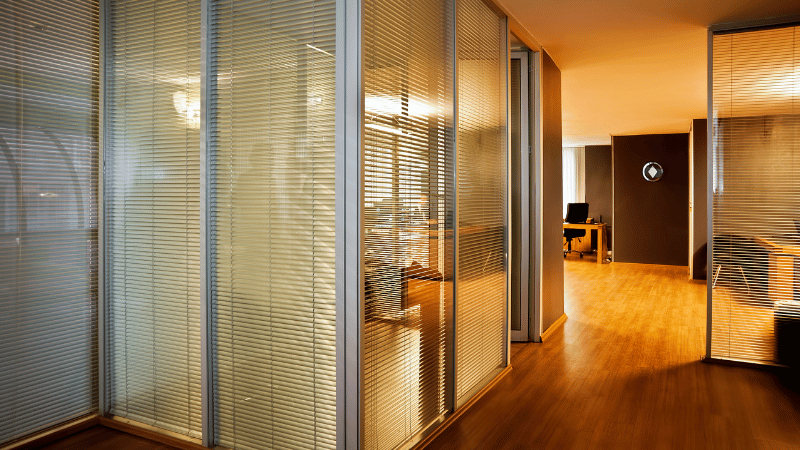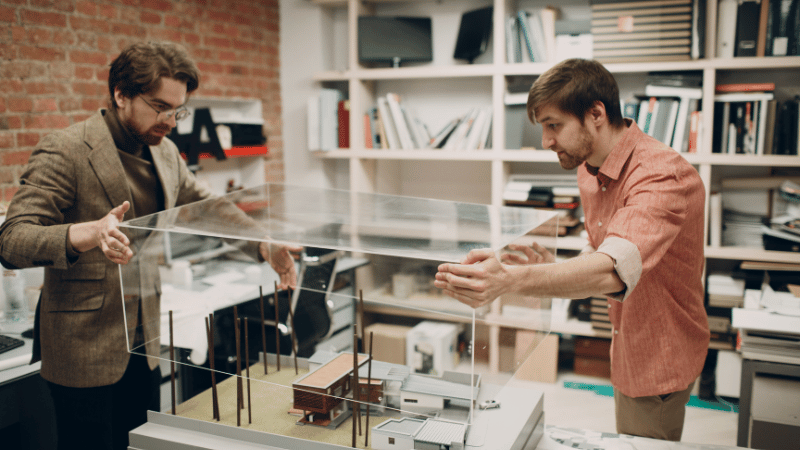
How to Safely Pack Glass Tabletops and Mirrors
How to Safely Pack Glass Tabletops and Mirrors
Written by Chicago Office Movers on . Posted in Corporate Relocation, Moving Tips

Glass tabletops and mirrors offer elegance to any office space. But fragile items like these require forethought when planning a corporate relocation. Knowing how to safely pack them is key to preventing them from shattering and leaving dangerous glass shards to clean up.
Glass desks in the office are ultra-modern. Sleek and stylish, they add spaciousness and a contemporary feel to the workspace. The most visually stunning pieces can cost a few thousand dollars each. The last thing a relocating business wants is for the glass to break before it reaches the destination.
How are glass tabletops safely packed?
1. Gather the Supplies
Safe packing starts with obtaining the supplies necessary to protect the glass during the move. Gather packing paper, packing tape, and bubble wrap. Mirror boxes are ideal for housing mirrors, while cardboard boxes are required for the glass tabletops. Obtain foam corners for added protection.
2. Disassemble the Table
Disassemble the base of the table from the delicate glass top. If the table has multiple detachable parts, make note of these first with a video or photo for reference when reassembling it later. Disassembly also helps when moving large pieces through doors, narrow halls, and up and down stairs.
3. Tape the Glass
The tabletop glass is extremely fragile. Protect this part of the furniture by using packing tape to tape an X across the glass. The crisscross of tape should keep the glass from shattering during transport. If it does shatter, cleanup will be easier and less dangerous.
4. Wrap the Glass
Wrap the glass in generous layers of packing paper. Secure the wrapped glass further with more packing tape to ensure it is both scratch and fingerprint resistant. Add extra protection by surrounding the wrapped glass with bubble wrap. The bubbles should face inward for maximum protection.
5. Prepare the Box
Crumple packing paper and stuff it into the cardboard box. Place the wrapped glass into the box. Fill any gaps with additional packing paper or cloths. Test whether the glass shifts by lightly shaking the box. If the glass moves, add more packing materials until it is stable.
Creating a crate for a glass-top mirror is strongly recommended in specific scenarios, such as for a conference table or when transporting over long distances.
6. Mark as Fragile
Seal the packed box with tape. Mark the box as “fragile.” Consider writing the location in which the glass will go, such as “first floor conference room” or “lobby.” The movers will know to handle the box with care and place it in the right location at the destination.
How are mirrors safely packed?
1. Lay the Mirror Flat
The packing starts by laying the mirror flat with the reflective side up, ideally on an elevated surface, such as a countertop. If the mirror is especially large, clear space on the office floor. Keep smaller mirrors together to make the process easier.
2. Tape the Surface
As with glass tabletops, tape the mirror with painter’s or masking tape. Form an X on the mirror from the top corner to the bottom. Also tape a gride across the mirror’s entire surface. The tape helps strengthen the glass and minimizes the risk of breakage during the relocation.
3. Protect the Mirror
Affixing foam or cardboard corner shields prior to packing is an excellent way to protect the mirror. Further protect the mirror by cutting two pieces of cardboard slightly larger than its front and back. Sandwich the mirror in between them and secure with packing tape.
4. Wrap the Mirror
Wrap the mirror with various materials. First wrap it with packing paper. Follow with bubble wrap so that the bubbles face inward, which grips the mirror better and keeps it from shifting around during transit. Add an extra layer of protection by covering the mirror with moving blankets.
5. Place into the Box
Create a layer of padding on the bottom of the mirror box with crumpled packing paper. Slide the wrapped mirror into the mirror box. If gaps exist, fill them with more packing paper. Close the box and shake it; if the mirror moves, open the box, and add packing paper.
6. Mark the Box
As with all delicate packed materials, label the box as “Fragile.” Write “Do not lay flat,” on all sides of the box. The professional movers will know to keep the mirrors upright to prevent cracks or breakage. Since mirrors are strongest at the edges, never lay them on the ground.
Keep both the boxed glass tabletops and mirrors on their sides to prevent any other boxes or items from being stacked on top of them. This step is also advised to prevent heavy items from falling onto them and shattering the glass.
Packing glass tabletops and mirrors is a straightforward task. But when an office is filled with several glass desks or mirrors, it’s a time-saving measure to hire the professionals at Chicago Office Movers. As a full-service commercial mover, we offer efficient packing services to local businesses.
For thriving companies, time is money—which is the reason to leave the packing to us. Your employees experience less downtime with our quality packing services. At the destination, we unpack and reassemble the office goods so your business can get up and running fast.
We offer additional conveniences, such as receiving and warehousing. Your office possessions are housed in our secure storage facility. Our crews deliver and assemble the goods when they are ready to be removed from storage. We can also help with decommissioning your office space.
An office relocation is an exciting opportunity—and you need the experts at Chicago Office Movers on your side. Our experienced move specialists are available to help you coordinate the move from start to finish, including planning, packing, unpacking, and reassembly.
Whether your company is relocating, renovating, or simply needs storage space, count on Chicago Office Movers. We serve businesses large and small in Chicago, Illinois, and the surrounding areas.
Call our Chicago, Illinois, location at 312-244-2246 (CHI-CAGO) or fill out a form for a free estimate.
Contact Us
Related Services
- Corporate Moving
- Commercial Moving
- Reliable Commercial Storage
- Specialty Commercial Moving
- Furniture Assembly
- Movers for Office Renovation
- Machinery Moving
- Library Moving
- Lab Moving
- Server Room Moving
- Office Movers in Rosemont, IL
- Commercial Moving in Bolingbrook, IL
- Commercial Movers in Naperville, IL
- Commercial Movers in Des Plaines, IL
- Commercial Moving Services in Aurora, IL
- Schaumburg Office Movers
- Commercial Moving Services in Oakbrook, IL
- Commercial Movers in The North Shore
- Elk Grove Village Commercial Movers
- Furniture, Fixtures and Equipment Services
- Moving Company in Lincolnshire, IL
- Professional Movers in Downers Grove, IL
- Moving Company in Chicago, IL














